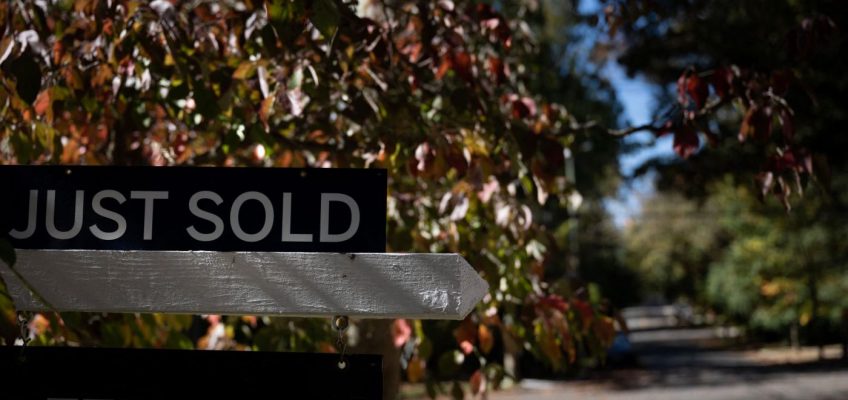A correction to an earlier version of this article has been appended to the end of the article.
Health insurance giant Anthem wanted $1,800 from Lauren Gonzalves for hospital nursery services after the birth of her son. But it had been two years since the Concord mother gave birth, she had already paid her out-of-pocket maximum and she believed her policy covered the care for which Anthem repeatedly sought payment.
The situation may be unsurprising for many of those with health insurance. Health care consultancy Premier pegged the national medical claims denial rate at 15% in 2023, while independent research group KFF found insurers that sell policies under the Affordable Care Act denied one in five claims that year.
Gonzalves, however, had an advantage over many policyholders: She has a doctorate in a medical field and has worked for large health care companies for years as a clinician and scientist.
Still, she spent almost two years working to get the bill canceled, and in the end, only found rescue in an AI bot.
In a statement, Anthem said it could not comment on Gonzalves’ billing for privacy reasons.
The free conversational bot Gonzalves, 39, used for help in defending the insurance coverage for her son’s care in the hospital nursery identified a federal law and other information that supported her claim. It’s one of two primary offerings from Counterforce Health, a North Carolina-based company running an AI-based platform for challenging health-coverage denials.
Counterforce Health’s flagship product, also free, produces AI-generated letters of appeal, to be sent to insurance companies by patients fighting denials.
The platform was co-founded by Neal Shah after insurance companies denied everything from an oncologist-prescribed MRI to a life-saving drug for his 34-year-old wife as she fought cancer, he said.
“It’s absurd how many people are fighting insurance denials,” Shah said.
It appears that it’s getting worse. In a survey of 200 executives and managers at health care providers — which are reimbursed by insurers for authorized patient care claims — consumer-credit and data company Experian found that in 2024, more than three-quarters said denials were rising. Fewer than half gave that response in 2022.
Insurance companies increase profits by refusing to pay initial claims, under a “Let’s deny, and see what you do” approach, Shah said.
In California, health plans approve the vast majority of the hundreds of millions of claims received every year, according to the California Association of Health Plans, which represents insurers,
“In fact, over 85 percent of medical services and 75 percent of pharmacy services are approved immediately,” the group said this week. “When a claim is denied, it’s most often due to incomplete information that needs clarification. Most denied claims are quickly resolved.”
Shah, who works as a principal investigator at the Johns Hopkins Artificial Intelligence Collaboratory for Aging Research in Baltimore, pointed to research from KFF showing that very few people appeal denied claims, but when they do, they often succeed.
Gonzalves gave birth to her son Grant in October 2021 at a local hospital. On the payment side, all went well, until more than two years later in December 2023, when she received a hospital bill of about $9,000, with her share at $1,800.
Anthem said she had failed to appeal within 180 days of receiving the medical care, although no bill had arrived during that time, she said. Further appeals went nowhere.
“It makes you want to pull your hair out,” Gonzalves said. “It’s so frustrating. It was so stressful.”
Meanwhile, she’d had twins, Fiona and Lucas, now 2.
Lauren Gonzalves, a cancer care social worker, is seen at her home in Concord, Calif., on Tuesday, Sept. 9, 2025. Gonzalves uses the Counterforce website, which works with AI to help individuals dispute medical bills. (Ray Chavez/Bay Area News Group)
“We had three under three and I’m literally having to fight this claim while I’m on maternity leave with my twins,” said Gonzalves, a medical social worker at Sutter Solano Cancer Care Center in Vallejo.
Then, earlier this year, a nurse friend who was doing consulting work for Counterforce Health suggested the app, and Gonzalves tried out its AI assistant, Maxwell.
The bot identified issues related to timing of billings and denials, and highlighted a federal statute concerning newborns’ coverage under mothers’ policies, essentially telling her, “These are all the reasons you should keep fighting this,” Gonzalves said.
Gonzalves also used ChatGPT, asking the chatbot how to escalate a grievance with Anthem, and receiving email addresses for people at a company handling complaints for the insurer. Within days, she was connected to an analyst — who easily found the claim Anthem had told her was inaccessibly archived — and a week later, last month, her $1,800 bill was dismissed, she said.
Insurance company denials, Shah said, should be taken as the starting point of a negotiation.
“The vast majority of the time the person is thinking, ‘I don’t have options now,’” Shah said. “Most people view it as a finality.”
Patients using the Counterforce Health appeal-letter generator upload the denial letter from their insurer, their policy documents, and any other relevant materials. The app’s AI — trained on thousands of successful appeal letters, plus insurance billing codes, and information from peer-reviewed medical journals, clinical guidelines, and state and federal regulations — scans relevant medical literature, insurance policy language, and appeal regulations, then produces an appeal letter the patient can send to the insurer, Shah said.
Because Counterforce Health doesn’t solicit results from users, Shah said he doesn’t know its success rate. But a rheumatology clinic that uses the app dozens of times a week reported success nearly three-quarters of the time, he said.
Stanford University health policy professor Maria Polyakova noted that insurance isn’t the only area with complicated, paperwork-based appeals — think the IRS or property taxes. But often, she said, “it’s just a really bad mismatch of getting into a bureaucratic nightmare in the middle of having a sickness.”
It remains to be seen whether Counterforce Health could boost the number of successful appeals, but such technology could help patients understand insurance processes that are, Polyakova said, “not particularly user friendly, in fact maybe the opposite.”




